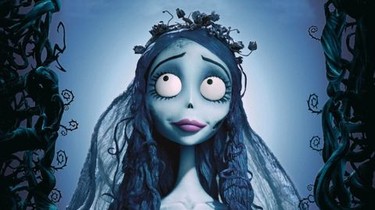“Orange is the New Black”: Fact or fiction?
This Netflix hit says a lot about what goes on in prison in the United States, but what’s real and what’s been added for extra drama?
“Orange is the New Black,” the popular Netflix show based on a true story, follows several women who are serving time in Litchfield Penitentiary. The main character, based on real-life Piper Kerman, is sent to prison for a short time for minor involvement with transporting drugs. In prison, she must assimilate into a crowd of quirky inmates, each with their own dynamic story. The show deals with issues such as racial segregation, overcrowding in prisons and reassimilation into society.
But does the show dramatize prison life in the Unites States?
According to the Prison Policy Initiative, there are 2.3 million people in American prisons. “OITNB” serves as a window into the lives of American prisoners. But what’s real and what’s been added for dramatic effect?
The crimes committed in “OITNB” are one such example. Most of the characters in “OITNB” are serving time for committing thrilling and tragic crimes that make for interesting stories. However, according to the research by the Criminal Justice Policy Foundation, six in ten women are in prison because of crimes involving drug use and for every female murderer, there are 99 drug offenders.
However, if all of the women in Litchfield had minor drug charges against them, we would miss stories like that of Tiffany, who shot a woman in an abortion clinic.
Then there’s Suzanne, who accidentally kidnapped a child. Her situation is less far-fetched, because she does represent a common experience in prison. According to a Washington Post article, more mentally ill Americans reside in prisons than in mental institutions. The article states, “The Treatment Advocacy Center found that in 44 of the 50 states and the District of Columbia, the largest prison or jail held more people with serious mental illness than the largest state psychiatric hospital.”
Therefore, Suzanne’s character in Litchfield may not be all that far from reality. The fact that there aren’t more mentally ill characters is a failure to expose how common this issue is in reality. However, the character is a step in the right direction. Through the character of Suzanne, the show helps demonstrate the lack of proper mental care for inmates. In the show, Suzanne will often get into trouble because of her condition. She will get thrown into the psychiatric ward for having physical altercations and breakdowns.
Mental illness is just one of the issues presented in the show. Racism is another important issue that the show covers.
Upon entering Litchfield, Piper notices the racial divisions between the inmates. They group together with their own race, establish territories, have turf wars over bathrooms; the list goes on and on. This aspect of the show is fairly accurate. In an interview with NPR, real-life Kerman said, “When you are first setting foot into this unit, this strange new community which you’ll be living in, race is a really powerful organizing principle.”
Kerman also said in the interview that the different groups only really started to mix when the women were assigned to their work projects. Some prisons actually institute a form of segregation by separating inmates based on race when they first arrive. According to a New York Times article, the California Department of Corrections Facility has inmates live in four main groups: black, white, Asian and other. The facility believes that racially charged violence will be reduced if prisoners associate with their own race, according to the article. The department of corrections also asserts that the natural segregation of inmates is often gang-related and strongly influenced by pressure from other inmates to stay among groups, the article states. Yet, this is the educated opinion of prison guards who deal with disputes regularly, not a proven fact.
In “OITNB,” the cafeteria is segregated. Latinos run the kitchen while the white inmates teach yoga. Season 5, the show attempts to mix all of these people together with a prison riot plot line. Once adrenaline and desperation kick in, the inmates know that they all have equal chances of surviving. Thus, they unite against the system that treats them like animals.
Another issue in the show is overcrowding. As Hillary Clinton said in her speech on criminal justice, “though only five percent of the world’s population lives in the United States, it is home to 25 percent of the world’s prison population.” There are so many prisoners that it is difficult to find space for all of them, especially since most are arrested for small drug charges and minor theft.
Overcrowding leads to poor mental health states and violence. This is exaggerated in Season 5 of the show when the inmates take over Litchfield and demand fair treatment and justice. This is reminiscent of the prison riot in Attica, New York that the show references in the Season 4 finale. The prisoners demand basic human rights like medical treatment and an end to brutality, but are were ultimately treated in an inhumane way and doused with tear gas and shot at.
“OITNB” is not the only way that the American public can learn about what is going on in our prison systems. There is a course taught at the University of Massachusetts Amherst, called Social Justice Journalism, which focuses on mass incarceration. This course, taught by Razvan Sibii and Shaheen Pasha, delves much further than the TV show. Students go to an actual prison to interact with real inmates and teach them about journalism. The course syllabus specifies that “SJ/advocacy journalism differs from ‘mainstream’ journalism in its insistence on reporting the struggle of underserved communities, and on speaking to individuals whose voice is rarely heard in the public sphere.”
Besides providing inmates the opportunity for their voices to be heard , this class also provides prisoners with a new skill. One harsh reality in “ONITNB” is the endless loop that prison becomes for most inmates who try to make it in the real world. Characters like Alex are released just to find themselves threatened and jobless in the real world. Aleida also leaves prison in Season 5 just to find herself out of luck, with no skills and little to nothing to support herself.
According to a study on Federal Recidivism, 49.3 percent of inmates released either permanently or on parole in 2005 were arrested again within eight years. In “OITNB”, we sympathize with those who fail to make it after leaving prison, and there are countless people in reality that suffer the same fate.
“OITNB” has the eyes of many Americans. While it may add certain aspects and violence for dramatic effect, it portrays injustices that are occurring in prisons that many people have never considered. It highlights the humanity of the inmates who are crowded into facilities for minor crimes. Watching this show and taking classes like the one offered at UMass can turn a normal Netflix session into one of better social understanding and a movement for change.
Email Isabel at [email protected].












